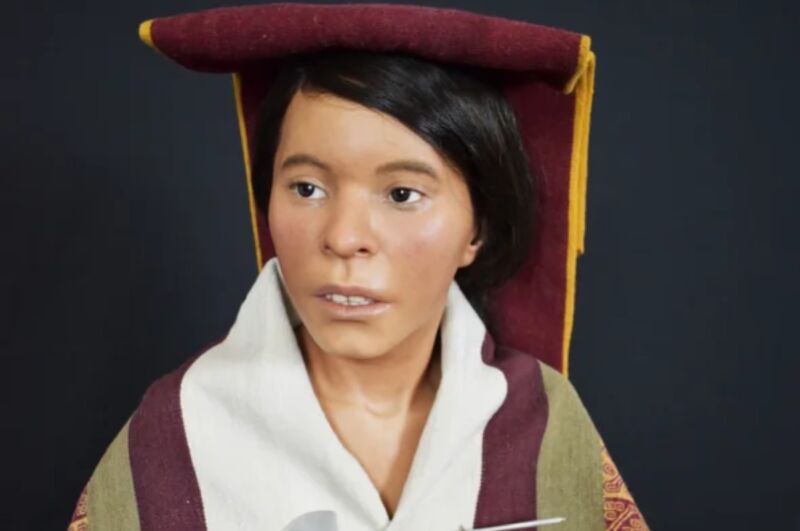A forensic artist has given a 500-year-old Inca "ice maiden" a face [View all]
Dubbed "Juanita," the young woman was likely killed during a sacrificial ritual.
JENNIFER OUELLETTE - 12/28/2023, 7:40 PM

Enlarge / The final approximation of the Incan girl dubbed "Juanita" wearing clothing similar to what she was wearing when she died.
In 1995, archaeologists discovered the frozen, mummified remains of a young Inca girl high in the mountains of Peru, thought to have died as part of a sacrificial ritual known as Capacocha (or Ohapaq hucha). In late October, we learned how she most likely looked in life, thanks to a detailed reconstruction by Swedish forensic article Oscar Nilsson. A plaster bust of the reconstruction was unveiled at a ceremony at the Andean Sanctuaries Museum of the Catholic University of Santa Maria in Arequipa, Peru, where the girl's remains (now called Juanita) have been on near-continuous display since her discovery.
"I thought I'd never know what her face looked like when she was alive," archaeologist Johan Reinhardt told the BBC. Reinhardt had found the remains with Peruvian mountaineer Miguel Zárate at an altitude of 21,000 feet (6,400 meters) during an expedition to Ampato, one of the highest volcanos in the Andes. "Now 28 years later, this has become a reality thanks to Oscar Nilsson's reconstruction."
According to Reinhardt, Spanish chroniclers made reference to the Inca practice of making offerings to the gods: not just statues, fine textiles, and ceramics, but also occasionally human sacrifices at ceremonial shrines (huacas) built high on mountain summits. It's thought that human sacrifices of young girls and boys were a means of appeasing the Inca gods (Apus) during periods of irregular weather patterns, particularly drought. Drought was common in the wake of a volcanic eruption.
During those periods, the ground on summits would unfreeze sufficiently for the Incas to build their sites and bury their offerings. The altitude is one reason why various Inca mummified remains have been found in remarkable states of preservation.
Earlier discoveries included the remains of an Inca boy found by looters in the 1950s, as well as the frozen body of a young man in 1964 and that of a young boy in 1985. Then Reinhardt and Zárate made their Ampato ascent in September 1995. They were stunned to spot a mummy bundle on the ice just below the summit and realized they were looking at the frozen face of a young girl. The body was surrounded by offerings for the Inca gods, including llama bones, small carved figurines, and bits of pottery. Juanita was wrapped in a colorful burial tapestry and wearing a feathered cap and alpaca shawl, all almost perfectly preserved. Reinhardt and Zárate subsequently found two more ice mummies (a young boy and girl) the following month, and yet another female mummy in December 1997.
More:
https://arstechnica.com/science/2023/12/how-a-forensic-artist-reconstructed-the-face-of-500-year-old-inca-ice-maiden/
